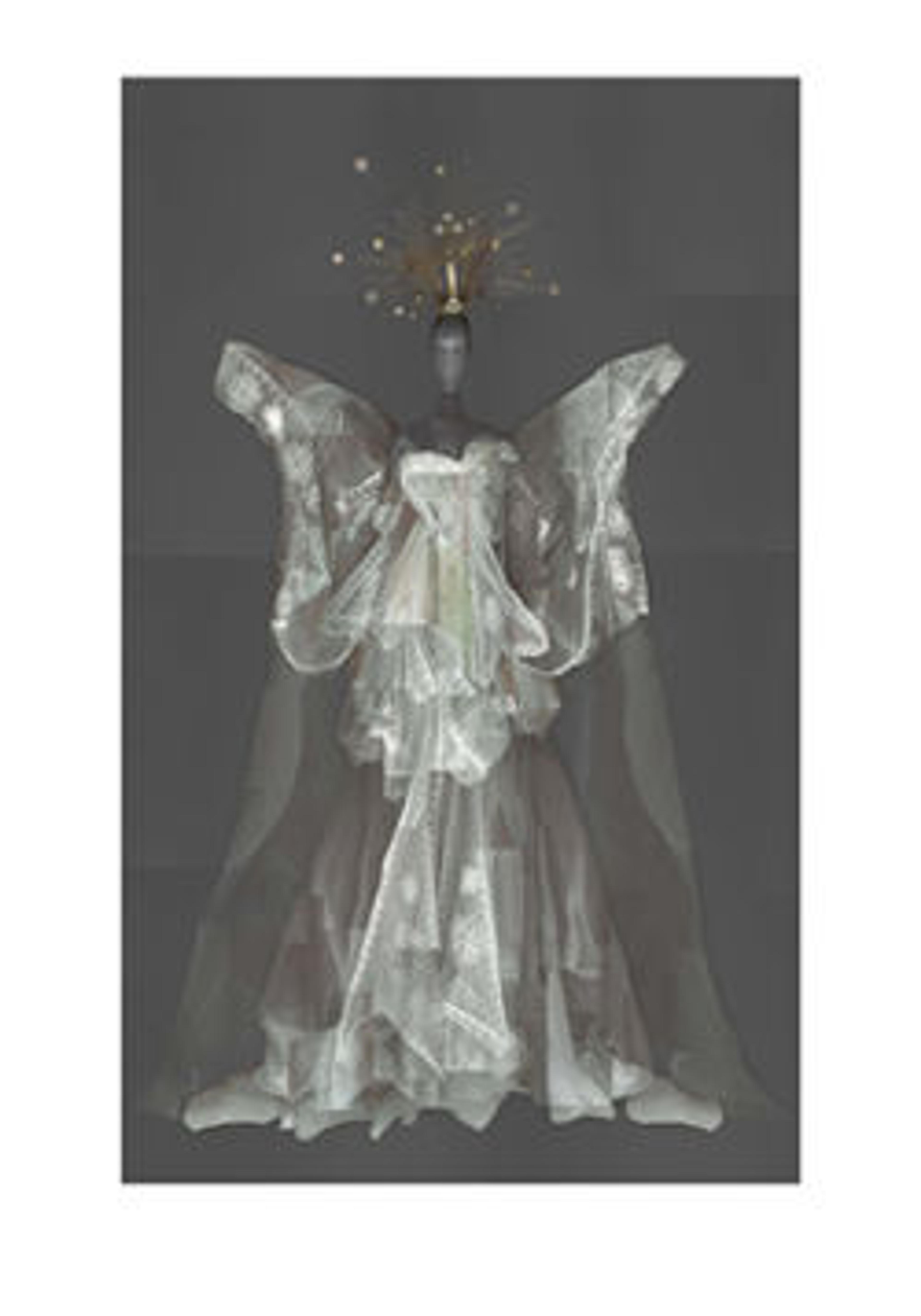Processional Cross
Elaborately decorated crosses were widely used in religious, military, and imperial processions during the Middle Byzantine era. Often, as here, inscriptions in Greek identify the holy figures depicted in portrait busts. On the front of this cross, the central medallion contains a bust of Christ. The archangels Michael and Gabriel, the guardians of heaven, are pictured above and below him. To left and right are the traditional intercessors on behalf of humankind: the Virgin Mary, Mother of Christ, and John the Forerunner (Saint John the Baptist).
The inscription at the base on the back of the cross identifies it as the votive gift (supplication) of a Bishop Leo. It was probably offered in honor of Saint Thalelaios, a physician, who is shown in the back central medallion with the symbols of his profession, a medical case and the pointed surgical tool known as a lancet. To the sides are saints Nicholas and John Chrysostom, two of the most important early church fathers. The archangels Uriel and Raphael appear at top and bottom. A homily (sermon) attributed to Saint John Chrysostom describes crosses as "power for those who are ill" and "the purification of sickness"; the donation of this cross was perhaps connected to an illness. The cross may have been used in the ceremony for the purification of water, since Thalelaios, a late third-century martyr, is one of the saints named in that service.
The inscription at the base on the back of the cross identifies it as the votive gift (supplication) of a Bishop Leo. It was probably offered in honor of Saint Thalelaios, a physician, who is shown in the back central medallion with the symbols of his profession, a medical case and the pointed surgical tool known as a lancet. To the sides are saints Nicholas and John Chrysostom, two of the most important early church fathers. The archangels Uriel and Raphael appear at top and bottom. A homily (sermon) attributed to Saint John Chrysostom describes crosses as "power for those who are ill" and "the purification of sickness"; the donation of this cross was perhaps connected to an illness. The cross may have been used in the ceremony for the purification of water, since Thalelaios, a late third-century martyr, is one of the saints named in that service.
Artwork Details
- Title:Processional Cross
- Date:ca. 1000–1050
- Culture:Byzantine
- Medium:Silver, silver-gilt
- Dimensions:Overall: 23 7/16 x 16 15/16 x 7/8 in. (59.5 x 43 x 2.2 cm)
Diameter of central medallion on back: 2 3/8 in. (6 cm)
Diameter of central medallion on front: 2 5/16 in. (5.9 cm)
width of arms: 5 3/16 in. (13.2 cm)
diameter of Michael medallion: 1 3/4 in. (4.4 cm)
diameter of John the Baptist medallion: 1 5/8 in. - Classification:Metalwork-Silver
- Credit Line:Rogers Fund, 1993
- Object Number:1993.163
- Curatorial Department: Medieval Art and The Cloisters
Audio
2730. Processional Cross, Part 1
0:00
0:00
We're sorry, the transcript for this audio track is not available at this time. Please email info@metmuseum.org to request a transcript for this track.
Listen to more about this artwork
More Artwork
Research Resources
The Met provides unparalleled resources for research and welcomes an international community of students and scholars. The Met's Open Access API is where creators and researchers can connect to the The Met collection. Open Access data and public domain images are available for unrestricted commercial and noncommercial use without permission or fee.
To request images under copyright and other restrictions, please use this Image Request form.
Feedback
We continue to research and examine historical and cultural context for objects in The Met collection. If you have comments or questions about this object record, please contact us using the form below. The Museum looks forward to receiving your comments.
